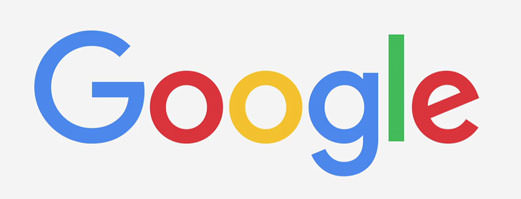Welcome to the latest copy of Juicy SEO’s Monthly SEO Report. In 2 minutes you will know a lot more than you know now and the bonus is that the new knowledge will help your website perform better in search engines like Google and Bing. So lets not waste any of that 2 minutes and get to it…
General SEO News
– First off in case you haven’t noticed or you don’t use any of the many Google websites, Google have changed their logo. This change will not make any difference in your online marketing campaign but some news nether-the-less.

– Back in the July edition of our monthly SEO report we reported that Google started to roll out the latest version of Panda called 4.2. This was going to take awhile to roll out, in fact it still is rolling out. However at the end of August / start of September it looks like they backed-out the version, we are not sure why they did this.
– Also at the end of August (around 23rd) Google made a change which adjusted the amount of indexed pages reported in their analytics. In case you don’t know Google provides this figure so you know how many pages are in Google. This now shows a more realistic figure.
– When you need to redirect traffic from one page to another you should use a 301 redirect (unless temp redirections then a 302). An example of why you would create a 301 redirection is if an old page of your website which is no longer live or relevant is still indexed in the search engines, you would redirect the traffic to a newer version of the page and therefore not lose visitors to your website. By creating a 301 you are telling the search engines that they should index the new page and de-index the old page. Google this month have advised to keep these redirections in place for at least a year as it can take that long to remove old pages.
– Google have said that it is OK to create articles on your website and link to the product on the site. That might sound a funny thing for them to say?! Reading between the lines here we think they are seeing a lot of articles which are not related to the products on the website and then linking out to them (a bit spammy!). Tip: Always write the articles to help the reader find what they are looking for not just to create content!
– Google have confirmed that their robots can now actually fill out forms on your website to gain access to content behind the form. This is only done in rare circumstances but something to think about!
– Google+ links have been removed from Google search results. We think this is because of action where Google is seen promoting their own products more than competitors in search results. We also can see the Facebook wannabe slowly get less PR in the future. We still think you should use the network to help in SEO and online marketing however it’s SEO power might be a little less in the future.
– Google are expected to release the latest Penguin algorithm update by the end of the year, after that it should be real-time updates and not run every so often. If you have cleaned up some bad links to your website this is good news. If you still have bad links to your website this could be very bad news for you! If you are not sure give us a shout, we can let you know either way.
This Months SEO Tip
With the latest news above about the new Penguin Algorithm coming this months tip is to clean up those bad links. But how do you know if a link is good or bad? In fact where can you see your links?
First off start in Google Webmaster Tools (Search Console), this will show you a list of links to your website. To identify if the links are bad we recommend looking through these links and look for any which are not connected to your product and in particular anything to do with Viagra, Ray-Ban Sunglasses or UGG boots! 🙂
If you are not sure just send us an email and we will help out.
Glossary
Panda: The Google Panda update concentrates on the quality of the web page content, if the algorithm thinks the page is of low quality it might penalise it in Google’s search results.
Penguin: Google has an algorithm called Penguin which analyses links to web pages and identifies which ones are valuable or spam links. An example of a spam link would be a paid link to your site.
Pigeon: Google’s Pigeon algorithm concentrates on Local SEO, if you have a bricks and mortar business this is something you should take note of.
TDL: A TLD means Top Level Domain like .com or .net or .co.uk.
